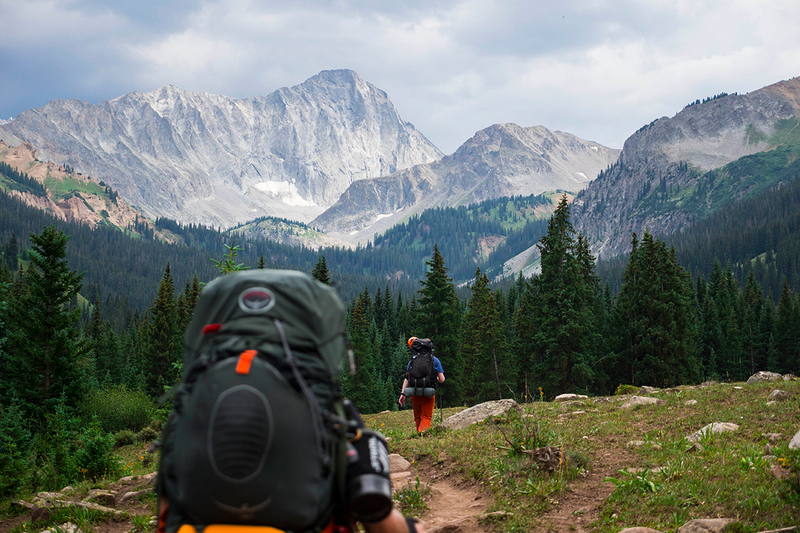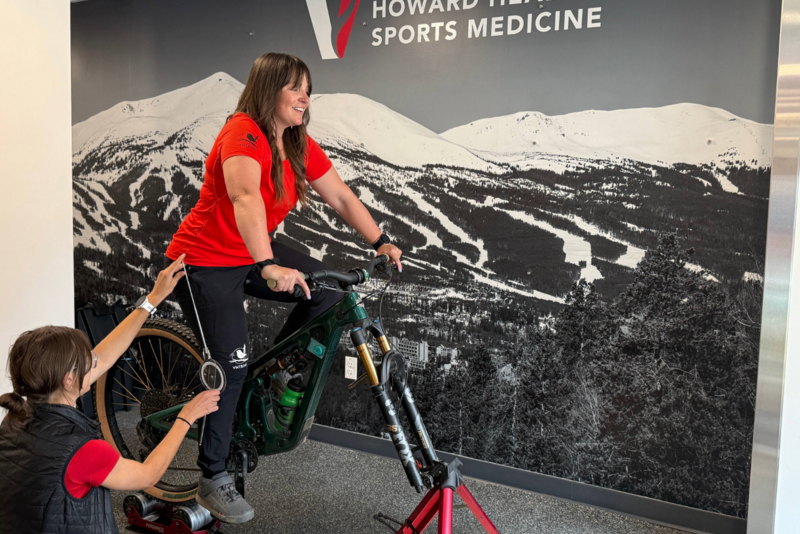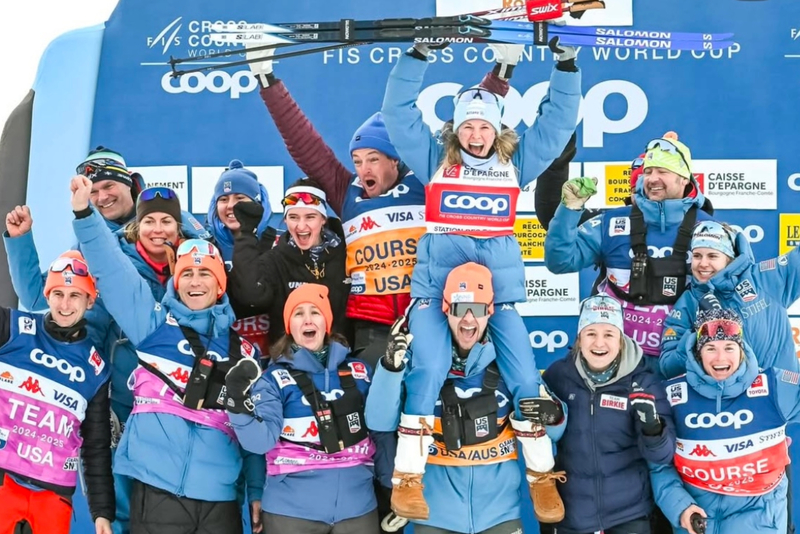News
Snacks to fuel your next alpine adventure and race day

What exactly are the best race day options for fueling your energy? What about hiking, backpacking & mountain biking? What brands do you recommend?
Staying energized on the trail or in a race is important to maintaining your speed, focus and endurance. There are lots of options out there, but what are the best snacks to bring? Below are several recommendations broken out for your next alpine adventure and race day.
ALPINE ADVENTURE – Smart Snacking
While by no means is this a plug for any particular brands, we’ve broken down our favorite snacks to pack on your next alpine adventure – whether trail running, hiking or mountain biking.
Bars: Bobo’s Oat Bars, Larabar, Papa Steve’s No Junk Bar, Rx Bar, Bonk Breaker, ProBar Meal
The goal is to look for bars without sugar alcohols in the ingredients list – carbohydrates that occur naturally but are unable to be fully digested & metabolized, often causing GI distress. These include sorbitol, xylitol, maltitol, glycerol & mannitol – to name a few.
Power bomb snack: peanut butter, granola, honey & tortilla wrap; Bear Naked Peanut Butter and Honey Granola Bites
This snack could almost be a dessert. They call it a "power bomb" because the wrap is packed with protein, sugar, and carbs to fuel your big day summiting a fourteener. Some people simply ditch the honey and/or tortilla to create "power balls" with just peanut butter and granola. If you are in a time crunch and looking for something similar in a store, try the "Bear Naked Peanut Butter and Honey Granola Bites"
Other snacks: Munk Pack Protein Cookie, Justin’s Nut Butter packs, RX Nut Butter packs, Simply Fuel Protein Balls (or homemade protein balls – google it!), trail mix, whole fruit
Jerky: Simply Snackin’, Sweetwood Smokehouse Fatty, EPIC, Lorissa’s Kitchen
Jerky can be a delicious, light weight treat while on the trail, and it's packed with protein. Protein is great to satisfy your hunger and provides a nice energy boost. Also, the sodium in jerky can help regulate your body's hydration.
Electrolytes: Drip Drop, Skratch, Thorne Catalyte, Nuun, Ladder, The Right Stuff or LMNT (higher concentration electrolytes than most)
Gels: Muir Energy, Huma, UCAN
Energy powder: UCAN Superstarch powder
Protein powder: Thorne, Klean Athlete, BiPro (maybe not a trail go-to, but figured we’d make a few recommendations for your post-workout shake while we’re at it)
While this list is by no means all-inclusive, we figured it’d be a great starting point for those looking to dial in their alpine adventure fueling. Many of the options listed above can also be great fuel sources for longer trail races, keeping in mind that it’s best to first try out the fuel source on a training run rather than on race day. Keep an eye out on our social media for more alpine adventure-fueling ideas!
Final note: Looking for a one-stop-shop for all things supplement-related? Check out thefeed.com. Again, not an ad, just a friendly suggestion.
RACE DAY – Pros & Cons
While not a plug for any particular brands, we figured it’d be useful to break down the pros and cons of popular race day fuel sources out there.
Gels & chews – By far the most common delivery method for calories while running, these include single-serving packets that contain a gel-like substance or easy-to-chew gummies.
- PROS: Two to three swallows & the gels are down, minimal chewing is required for the gummies. They’re small & easily transportable & often contain added electrolytes. Bonus!
- CONS: Check out the (quite long) ingredient list of a Gu Energy Gel (for example) and there are likely a few words you’ve never heard in the product to help make it what it is. As a rule of thumb, the shorter (and easier to pronounce) the ingredient list (for any food product), the better. In addition, look for ingredient lists that contain multiple types of carbohydrates (glucose, fructose, maltodextrin, etc.). The better variety of carbohydrates within the gel, the better absorption and less chance of the bubble guts (I mean, GI distress). A good rule of thumb – always follow-up a gel with a swig (or three) of water to help with digestion.
Powders – Energy that is designed to be added to water. I’m a big fan of UCAN’s Plain Superstarch powder. Simply mix it in your water for long-lasting energy. (Pro tip: If you mix with just a few tbsp. of water, you’ve got your own homemade gel! Choose the unflavored powder, add your own flavored electrolytes & you’ve got quite the combo.)
- PROS: Every time you fuel, you’re also hydrating. Every time you hydrate, you’re also fueling.
- CONS: To meet your energy needs during a long run, you may need to drink QUITE a bit of fluids, if relying solely on liquid nutrition. **cue sloshy stomach** In addition, some people prefer plain water while running. Carrying two bottles (one with your energy powder, the other with plain water) sounds a bit logistically challenging.
Real food favorites – bananas, dehydrated berries, PB&J, rice cakes, waffles (not necessarily the honey stinger kind), potatoes, quesadilla, energy bites – the list goes on. Get creative. Avocado fan? Try mashing up an avocado, adding salt & transferring it to a Ziploc bag with the corner cut off. Your own homemade, long-lasting energy & electrolyte pack.
- PROS: Two words: Real. Food. It’s as simple as that.
- CONS: The foods listed above aren’t exactly “bite-size.” Real food typically requires a bit more space to carry (and therefore planning ahead figuring out how to haul your snacks). In addition, you’re getting more than just carbohydrates with most foods (think, protein and fat). The added nutrients and calories may be helpful on the longest excursions (lower intensities), but do take your body a bit longer to process as fuel compared to carb-only fuel options and may cause some GI distress at higher intensities.
Remember: The only person that can determine what’s going to work best for you on race day is yourself. As you experiment with different fueling strategies in training, keep a food log as part of your training. Start a note in your phone & track the brand, fuel form, amount, and types of fuel as well as any symptoms (positive or negative) that you experience to help you pick your optimal, high-octane fuel on race day.
More News
-
More

Eagle physical therapist joins the U.S. Air Force’s 9G club
Eagle resident Devyn Kammert, a physical therapist with Howard Head Sports Medicine,
-
More

Optimize Your Ride: What Is a Medical Bike Fit and Why It Matters
Whether you're a weekend warrior, daily commuter or competitive cyclist, comfort and performance on your bike are...
-
More

Travel Tips to Combat Soreness & Fatigue
While some chase the snow, others are heading to the beach for warmer weather. Travel is a common passion of those...





